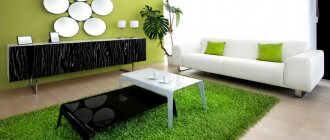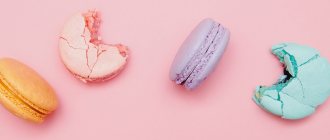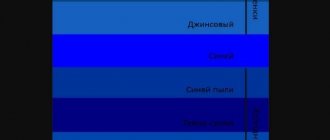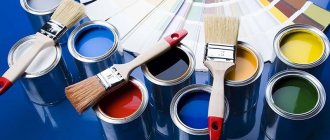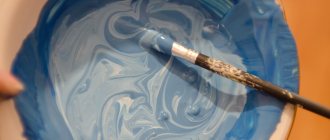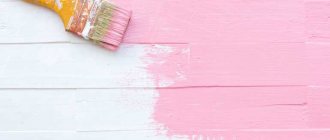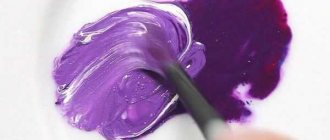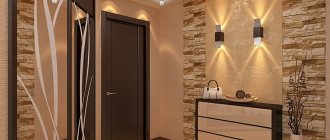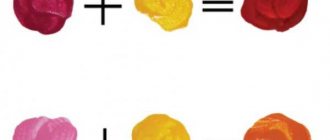Khaki color belongs to the yellow-green-brown range. It is represented by a whole group of shades, varying in tonality and saturation: from slightly greenish with a brown tint to dusty, earthy ones.
Khaki also has other names: khaki color, camouflage, since it is often used for sewing military uniforms. Also, similar shades are widely used in painting, design, and repair work. How to get khaki color by mixing tones? The question is very relevant, because it is almost impossible to find it in finished form, it is not included in the standard range of shades of gouache and watercolor.
Surface finishing
After the paintwork has been completely removed, you need to degrease the surface. Please note that this cannot be done with ordinary solvent or gasoline. To do this, you should purchase a special liquid. It can be applied using a sprayer or a gun.
After the surface of the car has dried, all chips and minor defects should be repaired with putty. After the treated areas have dried, the surface can be primed. It is better to choose the color of the primer as close as possible to the color of the paint. It is better to apply the primer in 2 layers. At this stage, the preparatory work can be considered completed.
Puttying machine
Fine art and khaki
This camouflage undertone is similar to raw umber. They are used to neutralize other pigments, and when diluting khaki, they can be used to draw body lines. If you take a tone of great saturation, then you can use it to draw the ground, trunks and military themes.
This color is considered neutral. It looks great with a variety of other colors, it's not flashy, doesn't hurt the eyes, doesn't bother you, and is great as a base.
It belongs to the brown palette, and can also be obtained by combining secondary colors, which in the circle of tones stand as opposite colors (for example, red and green).
But the finished result will be very different: green, yellow or gray will predominate.
Getting a specific undertone is problematic: you will need to do a lot of experiments with pigments.
Draw without a stencil
To paint camouflage without a stencil, you will need the following equipment:
To begin, we select a drawing. We sift through a mountain of relevant sites on the Internet, leaf through catalogs in stores with military literature, consult with friends, turn our heads 360 degrees on the streets, looking for something suitable on other cars. Having decided on the design, we choose each color for it - you can use any range you want. Or you leave everything as in the found original.
Now let's prepare the car. This process consists of the following steps:
Preparing the car for painting Now the car is ready for further work - we can start painting. The step-by-step process is as follows: Painting a car in camouflage with your own hands When the varnish is dry, the work can be considered complete. The disadvantage of this method is that some types of drawing cannot be made using it. This to some extent limits our possibilities.
We prepare the car for painting with our own hands
The best time to paint a car is summer, because warm weather and lack of humidity are the most optimal conditions for painting work. It is recommended to paint a car in camouflage in a garage or a clean, spacious box. The main thing is to completely eliminate such a negative factor as dust, both in the air and on the surface, otherwise the camouflage pattern may not be as attractive as we would like.
Cover unpainted surfaces with newspaper. Click on photo to enlarge.
We begin preparing the car by covering all unpainted areas with old newspapers. We attach them with wide masking tape. We completely cover the optics, glass, door frames and rubber seals. If, after completing all the work, it turns out that the paint has got onto one of these parts, carefully treat the stained area with a solvent.
Then, we degrease the surface of the car with a lint-free cloth soaked in gasoline. It is not recommended to use a solvent for these purposes, as it is too aggressive and can not only clean the surface, but also damage the factory paintwork.
If you try to paint such an area with spray paint, the coating may become “fur coated”. If this does happen, take a halogen lamp in your hands, heat the surface, and then completely remove the paint with a spatula. If this is not done, when the paint is reapplied, the “fur coat” may appear again.
Application of the SMUK model
There is a model of SMUK colors, with it you can find any khaki tone.
This is a scheme that helps to obtain colors, often used in printing for printing, it contains blue, purple, yellow, and also magenta.
Using graphic programs, the optimal proportions of each tone are selected in order to obtain a camouflage shade.
The resulting result is used in graphic design. It turns out the way the client imagined it, because the computer does not allow you to make mistakes that can happen when mixing colors manually.
How can you slightly change the finished result?
It happens that the resulting tone is not suitable. Therefore, it can be slightly adjusted to the desired shade.
So, to make a khaki coffee tint, you can mix in a little brown, and then work with white. You need to add white color in very small particles until you get the desired option.
Red color is also used to complete the color of protection. It gives depth, softness, and also warmth, but a sandy tone will give sunshine.
If you add any blue shade, you can get a cooler effect, with a gray tint, more like the color of earth.
To get a more saturated color, add dark pigments (violet, charcoal), and to reduce brightness, the color of steel is suitable.
Preparatory stage
It is better to carry out such painting work indoors in the warm season. First you need to thoroughly clean the work area from dust and unnecessary things.
The surface of the car should be washed and dried. All components that will not be painted must be removed. This includes handles, locks, mirrors, insignia. Anything that cannot be removed must be covered with thick paper and secured with masking tape.
After the car has been cleaned and covered with protective material, you can begin to remove the paintwork. Since it is quite difficult to do this manually, it is better to use a special grinding machine with fine abrasive or sandblasting (how to choose a sandblasting gun). The final stage in this case is blowing the car with compressed air.
Removing paint from a car
Types of paints for automotive leather
Products for painting leather car interiors can be found at a parts store or ordered online. There are regular paints for coloring leather and professional formulations. Each remedy has its pros and cons.
Acrylic
There are special acrylic paints for leather. These products should not be confused with repair compounds. The label for acrylic paints should say “for leather”. Such products are used to tint any leather products, including car interiors.
Advantages and disadvantages
low cost; wide palette of colors; you can mix different paints to find your shade; the product contains wax and oils; stains the skin and fills scratches.
wears off after some time; Used only for touching up individual parts (not for repainting the interior).
I like it I don't like it
Creamy
Cream leather dyes help restore the color of a leather product. These paint products are sold in tubes. Creamy paint is squeezed onto a sponge or swab and tints the skin.
Advantages and disadvantages
low price; ease of use; fast color restoration.
Suitable only for touching up small areas; quickly disappears from the surface; Gets your hands dirty.
I like it I don't like it
Aerosol
Sprays and aerosol paints for leather allow you to quickly restore the color of your interior. Such products are sprayed onto the leather surface and dry in a matter of minutes. Aerosol paint refreshes the skin. In addition, its composition penetrates deeply into the surface and has water-repellent properties.
Advantages and disadvantages
ease of use (sprayed onto the skin); the paint dries quickly; allows you to paint over scuffs and completely update the interior color.
high price; wears off over time.
I like it I don't like it
Paste products
To update the color of leather interior elements, you can use paste paints. This product penetrates deeply and completely stains the surface. The paste-like consistency allows you to restore a leather product.
Advantages and disadvantages
eliminates and smoothes out defects; The paint lasts a long time and does not wear off.
used to restore small areas of the interior; painting is labor intensive.
I like it I don't like it
Liquid skin
Professional means for restoring leather interiors include liquid leather. This product has a consistency similar to glue. The sticky base of this composition allows you to glue small cracks and cuts.
Advantages and disadvantages
smoothes and eliminates defects; lasts a long time and does not wear off.
high price; Suitable for restoring small areas of the interior.
I like it I don't like it
The final stage
If you want to get a matte surface of the car, then the surface must be treated with matte varnish. Like most paintwork, it is better to apply it in 2 layers. After the varnish has dried, the car can simply be treated with regular metal polish.
Author: Baranov Vitaly Petrovich
Education: secondary specialized. Specialty: car mechanic. Professional diagnostics, repair, maintenance of passenger cars of foreign production 2000-2015. Extensive experience working with Japanese and German cars.
How to Get Cool, Dark Results
The protective color is a very unusual one, which can be either cold or warm, depending on the colors they add depending on the desired end result.
So, all shades of blue (turquoise, sky color, dark blue) add coldness to the final tone. Often such paints are used for painting wooden trunks in winter, for drawing fur.
If there is a lot of blue, then you can remove it with red and yellow.
To get a darker pigment, use black, although getting a normal tone is quite problematic. If you mix a lot of dark, the result will be dirty, rough, it is important to work very carefully here.
This is a good color for painting twilight, shadows of trees, but black can always be replaced with charcoal: the result will be softer, but also richer.
